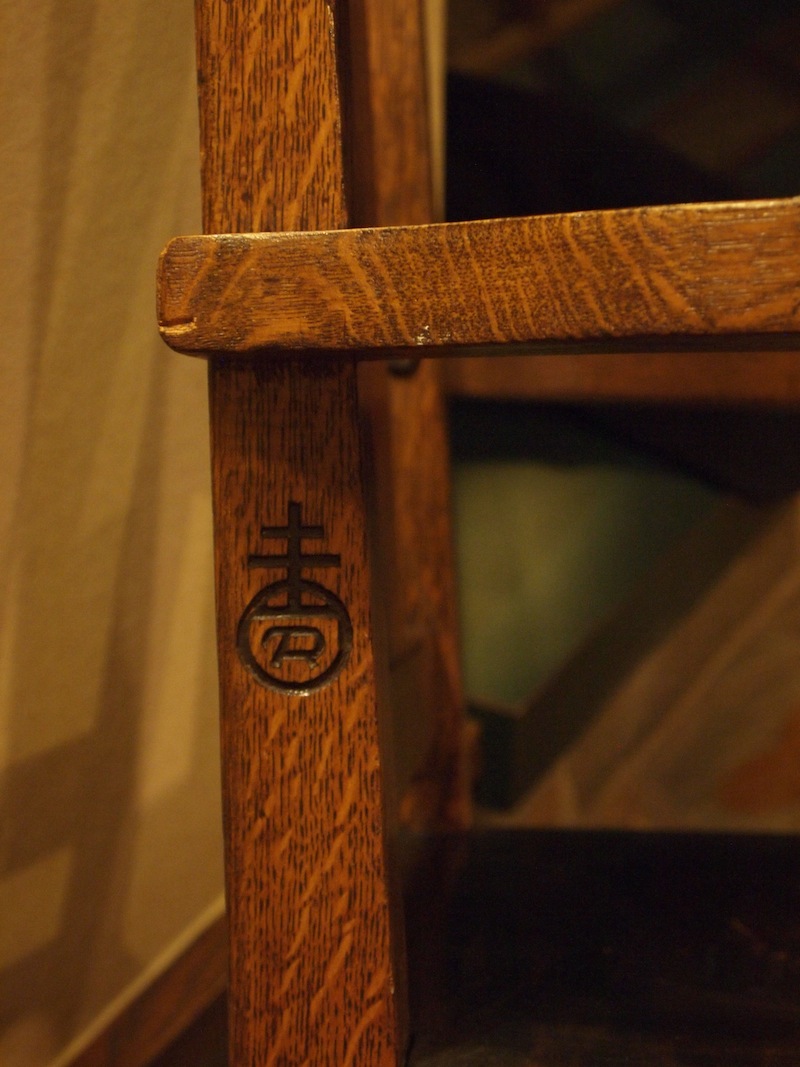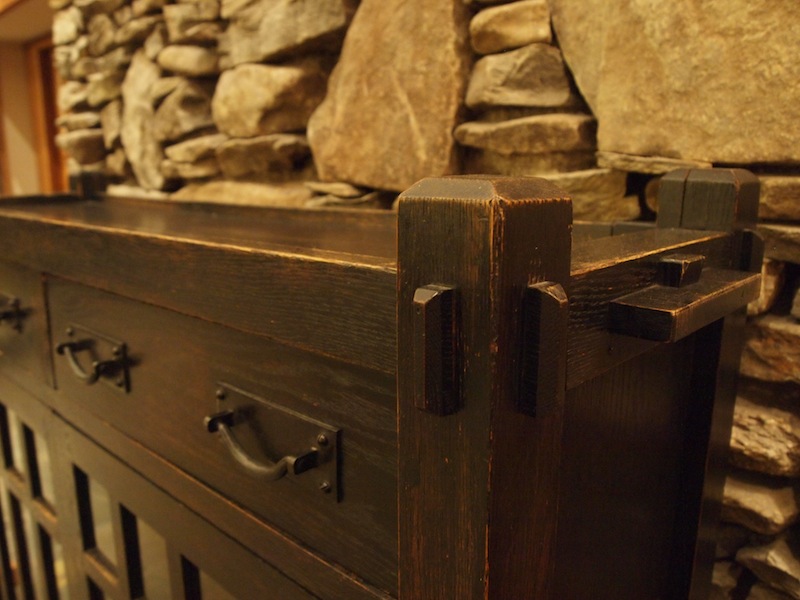
Period furnishings at the Grove Park Inn. Photos by Kyle Sherard

Asheville is hailed as an Art Deco capital, in the ranks with Miami for its architecture of that style. But an older, lesser-known vein of architecture and design predominates. It’s one quietly woven throughout the city and carried on in modern incarnations — Arts and Crafts.
It was a design motif, but also a lifestyle. And it’s often overlooked in Asheville.
The style’s most basic technical and ideological foundations resisted the machine-made. It was popularized by middle-class craftsmen in the latter 19th-century as a response to the low-quality, factory-made goods that pervaded the market as the Industrial Revolution took hold of Western European and, eventually, the United States.
Its beginnings rest in discussions about wallpaper between English art critic and educator John Ruskin and William Morris, an artist and one of his students. European craftsmen, bent on staving off low-quality machined goods, became the style’s pioneers.
They wanted to uphold the traditional techniques in woodworking and craftsmanship that factory modernization threatened. Craft furniture, houses and their accessories were simplified for the lives of the rising middle class. The heavily embellished veneers and decorations that epitomized the Victorian period began to vanish, giving way to simpler ornamentation, or none at all. Metal fasteners were used as little as possible and the construction of an object soon became the source of decoration.
Arts and Crafts in the Valley
“In Asheville there’s a persistence of the Arts and Crafts ideals,” says Clay Griffith, an Asheville-based architectural historian. Our region still celebrates the handmade and the artisanal: You can see it in homesteading traditions, do-it-yourself lifestyles and household self-sufficiency. But it also lingers in the font choices and color schemes of hotels, cafés and area businesses, not to mention the very structures in which they reside. And don’t forgot the city’s ample collection of oversized porches.
“The entire style is suited to the mountain setting,” Griffith says, calling the WNC movement “a reaction to urban congestion.”
Griffith is among a few dozen speakers and artisans featured at The Grove Park Inn’s Arts and Crafts Conference. The conference, now in its 26th year, is the nation’s largest educational expose of all things Arts and Crafts: books, furniture and woodwork, homes, textiles, pottery and the city itself. Even if you don’t attend the seminars, lectures and workshops, the free-to-attend antiques shows and booth-style displays will heartily suffice for the curious attendee or passerby, according to Bruce Johnson, the conference’s director and founder.
The Grove Park Inn is itself an example of Arts and Crafts architecture. It’s also among the most famous in the nation, largely because of the Inn’s collection of period furnishing — specifically, the Roycroft works.
Elbert Hubbard, a writer and founder of the Roycroft Furniture Company in East Aurora, N.Y., was sought out by Fred Seely (Edwin Wiley’s son-in-law) to supply the furniture for the new inn. Hubbard’s son, Bert, signed a contract with Seely that included more than a thousand pieces of furniture, to be hand-built in a year’s time.
However, after supplying only three sets of bedroom amenities, they outsourced the rest of the order to the White Furniture Company of Mebane, N.C. The Piedmont-based furniture makers used the true Roycroft pieces as models for the remaining order. Many of these original works are still in use in the wings and rooms of the original hotel.
Developing a style
The Arts and Crafts Movement entered the Asheville valley in the 1880s. “Many of these ideas crept in with the railroad,” says Johnson. “It came in with the outsiders.” Tourists came seeking recreational vacations, lured by fresh mountain air and a then-famed temperate climate. Many found permanent residence.
They brought with them many of the basic concepts and occasionally a few portable pieces imbued by the style. So did the scores of artisans, architects and engineers brought here to work on the Biltmore Estate. As they fanned out from the estate, they took with them their practices and design sensibilities. Enter the bungalow — a mainstay in Asheville domestic architecture.
“The Arts and Crafts Style was about neighborhoods,” Johnson says. Bungalow-style homes were built in small clusters in the valley, rather than in the countryside or high in the mountains. Minimal acreage combined with conservative square-footage eliminated the need for servants, which were thought necessary for grandiose 19th-century Victorian homes.
The style can be seen in earthen colors and two-toned siding, diamond-topped window panes, decorative exterior rafters and the bold exo-skeleton framing that outlines and traces the edges of homes in Montford, Hillside, Albemarle Park and other neighborhoods. Add to that low, overhanging and even wing-like roofs and expansive, verandah-style porches sported by hundreds of homes in the city.
When you begin to notice the style’s characteristics, it’s hard to not see their ubiquity. That’s because the traits are, quite literally, all over the place. It’s unique to Asheville, but at the same time ubiquitous. “We kind of take it for granted because it’s everywhere,” Griffith says.
The Grove Park Inn’s 26th Annual Arts and Crafts Conference takes place this weekend, Feb. 22 through 24 and features seminars, discussion groups, walking tours, displays and demonstrations. For schedule and pricing, visit http://www.arts-craftsconference.com.


Before you comment
The comments section is here to provide a platform for civil dialogue on the issues we face together as a local community. Xpress is committed to offering this platform for all voices, but when the tone of the discussion gets nasty or strays off topic, we believe many people choose not to participate. Xpress editors are determined to moderate comments to ensure a constructive interchange is maintained. All comments judged not to be in keeping with the spirit of civil discourse will be removed and repeat violators will be banned. See here for our terms of service. Thank you for being part of this effort to promote respectful discussion.